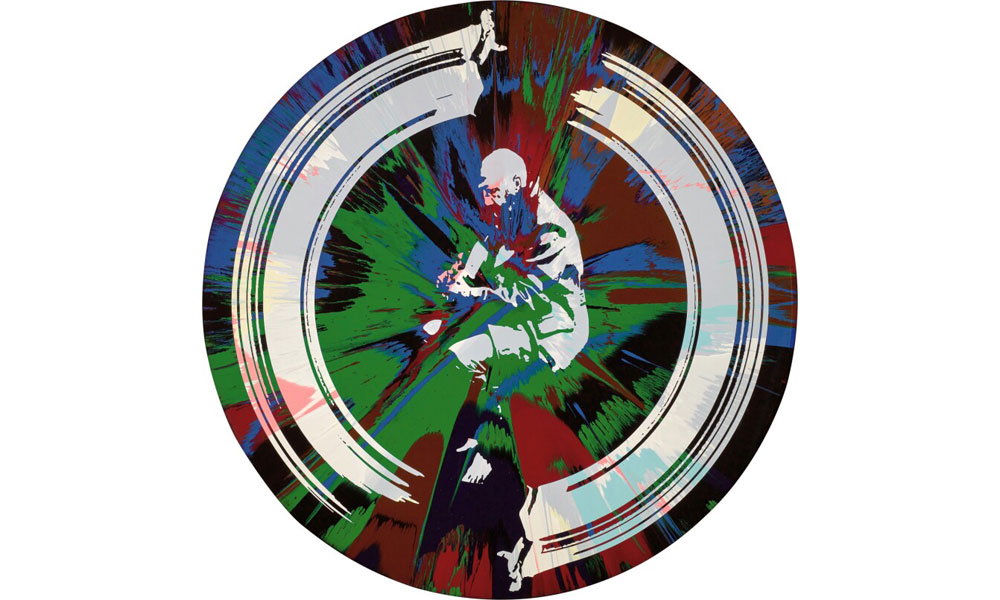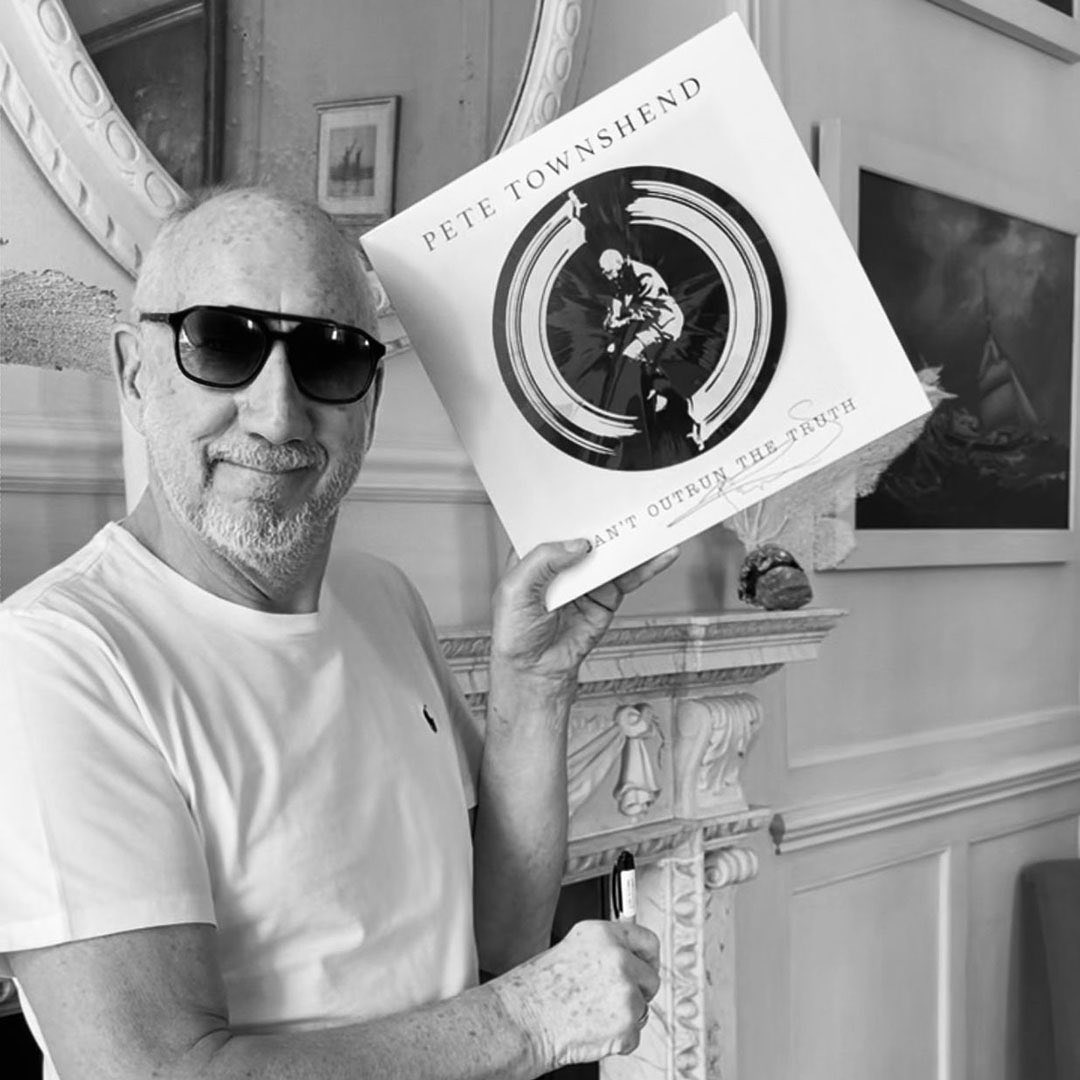
The beautiful painting that English artist Damien Hirst created for Pete Townshend’s single “Can’t Outrun the Truth” just went under the hammer at Sotheby’s on June 28, where it sold for an impressive 120,650 GBP. The artwork, titled Beautiful Pete Townshend Tune after Tune Painting, was sold to benefit Teenage Cancer Trust.
The song was written and produced by Rachel Fuller during the pandemic lockdown in 2020, and Pete recorded it with the goal of selling the single to help raise funds for TCT. Rachel and Pete asked Damien Hirst to do the artwork for the vinyl record sleeve. He happily agreed and created a unique spin painting that depicts Pete playing his guitar in the center.
“When Pete asked me to do something, I jumped,” Hirst recently told the Guardian, “I thought a portrait using the spin machine was great for someone like Pete because creatively he can’t be pinned down.”
Damien Hirst’s artwork helped make the rare 12” vinyl single even more desirable for fans to purchase, and Pete signed the cover of 200 records, which were sold at the TCT Royal Albert Hall concerts last March.
 Photo credit: Pete Townshend / Rachel Fuller
Photo credit: Pete Townshend / Rachel Fuller
To promote the auction, Sotheby's posted a terrific conversation between Pete Townshend and Damien Hirst. Here are a couple excerpts where Pete describes his own background in art.
"It was what I wanted to do as a kid. When I was seven years old I moved from a dark time in my childhood into using fantasy as a way of feeling safe. I wrote stories and invented machines, which I drew. When I needed to draw people or familiar things, I just did it without thinking about it, and my drawing was technically very good. My father was a professional musician who was an adept “reader”: he could play almost anything put in front of him. He despaired of my inability to even begin to do the same, and steered me towards writing. Behind the scenes my writing included drawing. When I got to grammar school I started to paint, and although the teaching was old fashioned, I passed three exams with grade A’s: Painting, Technical Drawing and Metalwork. So, I was a maker of things as well as a dreamer."
"Art for me was exactly like music. It fell under my fingers. I could just do it. I couldn’t accurately kick a football, but I could draw a cat and play an E chord. At art college in 1961 I discovered Peter Blake and Richard Hamilton, Jasper Johns and so on. That expression of vitality and vibrancy, bringing together the street, the soul and the paintbrush, helped me realise that “Pop” was the most important word I could ever try to use…much more important than “Rock ’n’ Roll.”
In a recent interview with the Guardian, Pete said, “Peter Blake and so on were trying to bring a bit of the pre-war joy of the Impressionists and Cubists back to art. The Who were also trying to express something vigorous and vibrant, and I can see that in the work of Damien Hirst.”
Here's a great description of Damien Hirst’s Spin Paintings from Sotheby's auction page:
Beautiful Pete Townshend Tune after Tune Painting is a wonderful example from Hirst’s iconic Spin Paintings series. Created by pouring different colours of household paint onto a rapidly rotating canvas, Hirst’s renowned Spin Paintings are visually arresting for their colourful kineticism achieved through the spontaneous effects of chance, as the artist’s own hand is removed from the final product. By pouring a succession of different hues of household emulsion paint, the artist creates variegated surfaces of colour that speak to the centrifugal energy of their execution. Filled with dynamism and exploding with colour well beyond the limits of the canvas, Hirst’s Spin Paintings symbolise the beautiful unpredictability of life and the artist’s ongoing quest to push beyond preordained limits. The artist created his very first Spin Paintings in 1992 in his studio in Brixton, titling the works with the amusingly convoluted titles which now distinguish the series.
The Spin Paintings were inspired by the autonomous processes of Jackson Pollock, whose revolutionary drip paintings proved to be integral in changing the landscape of 20th century painting. Pollock pioneered his drip technique by dynamically pouring skeins of paint on canvas or paper laid on the floor below him. Similarly, Hirst’s application of paint combined with the mechanical spin of the surface is undeniably performative in its vigour.
